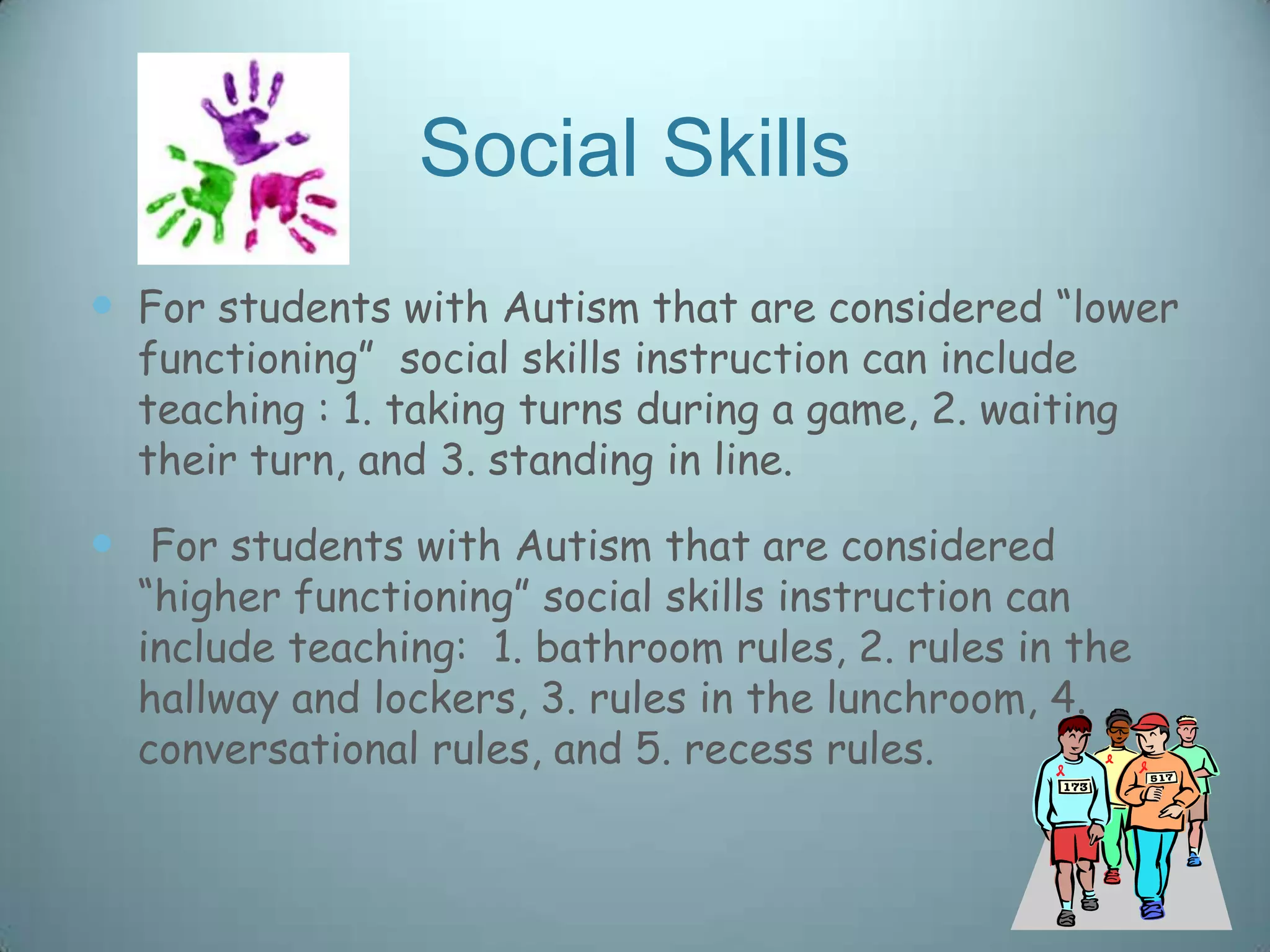This document outlines training modules for teaching social skills to students with autism spectrum disorders. It discusses how social skills must be explicitly taught through strategies like social scripts, social stories, video modeling, and power cards. These strategies use the student's interests and provide visual supports to teach appropriate behaviors in social situations. Regular practice of the social skills in different settings is important for students to learn the skills.
















